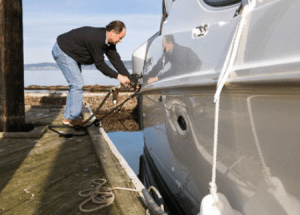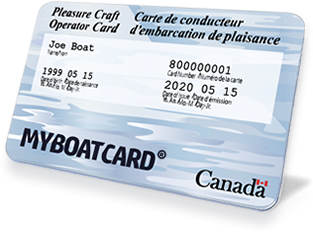Fuelling Procedures
 Gasoline fuel and fumes are extremely hazardous! Fuel and fumes need only a single spark to cause an explosion or to start a blaze. Spilled fuel is also extremely harmful to marine life.
Gasoline fuel and fumes are extremely hazardous! Fuel and fumes need only a single spark to cause an explosion or to start a blaze. Spilled fuel is also extremely harmful to marine life.
The following is a step-by-step guide that you should follow when refueling a boat:
Before Fueling
- Moor the boat securely;
- Shut down all engines;
- Ensure that all passengers are off the vessel during fueling;
- Extinguish all open flames;
- Do not smoke in the fueling area;
- Switch off all electrical equipment;
- Close all doors, windows, and ports;
- Place your on board fire extinguisher within easy reach; and
- Move all portable tanks ashore (never fuel a portable tank in the boat).
During Fueling
- Hold the fuel nozzle firmly against the boat’s filler pipe to prevent a build-up of static electricity; and
- Know how much fuel your tank can hold and do not overfill it — you have a duty to prevent fuel spills.
After Fueling
- Clean up any spillage if necessary;
- Open doors, hatches and ports;
- Place your portable tanks back in the boat. All portable fuel tanks should be kept away from sparks and heat and stowed in a well-ventilated location;
- Operate your vessel’s engine compartment blower for at least four (4) minutes immediately before starting up the engine (for inboard gasoline engine only);
- Check for vapours from the engine compartment before you start up the engine; and
- Sniff for vapour odours in bilges and cabins.
REMEMBER: You should always run the blower for at least 4 minutes before starting an inboard engine.

